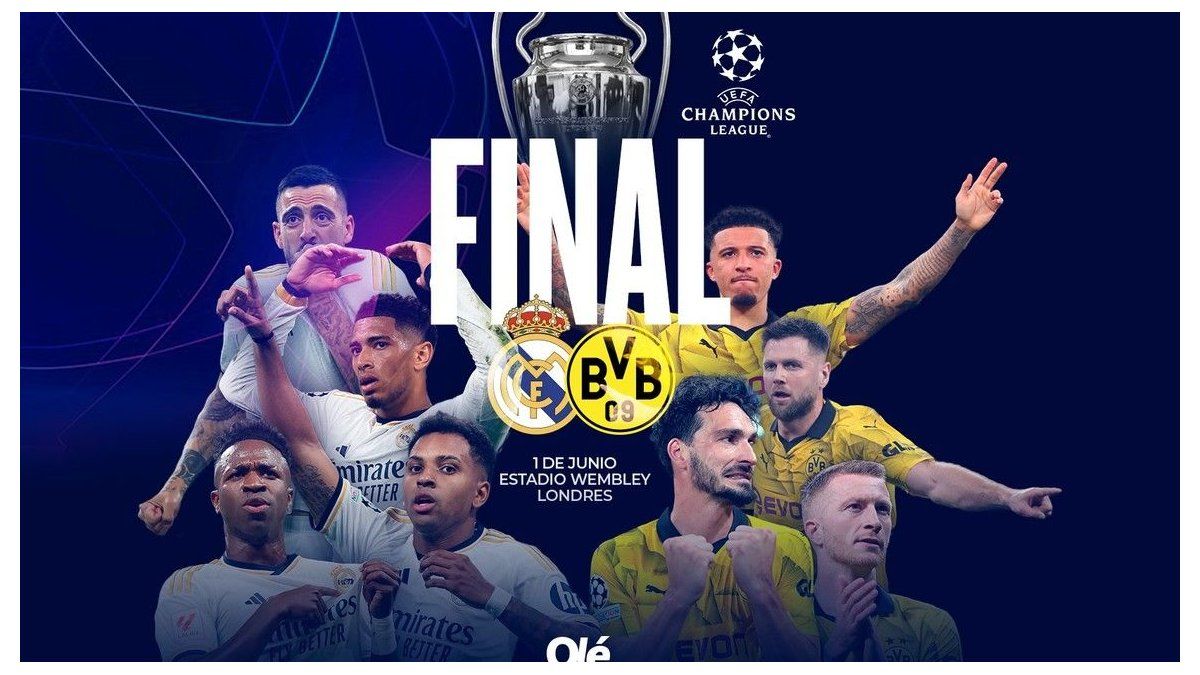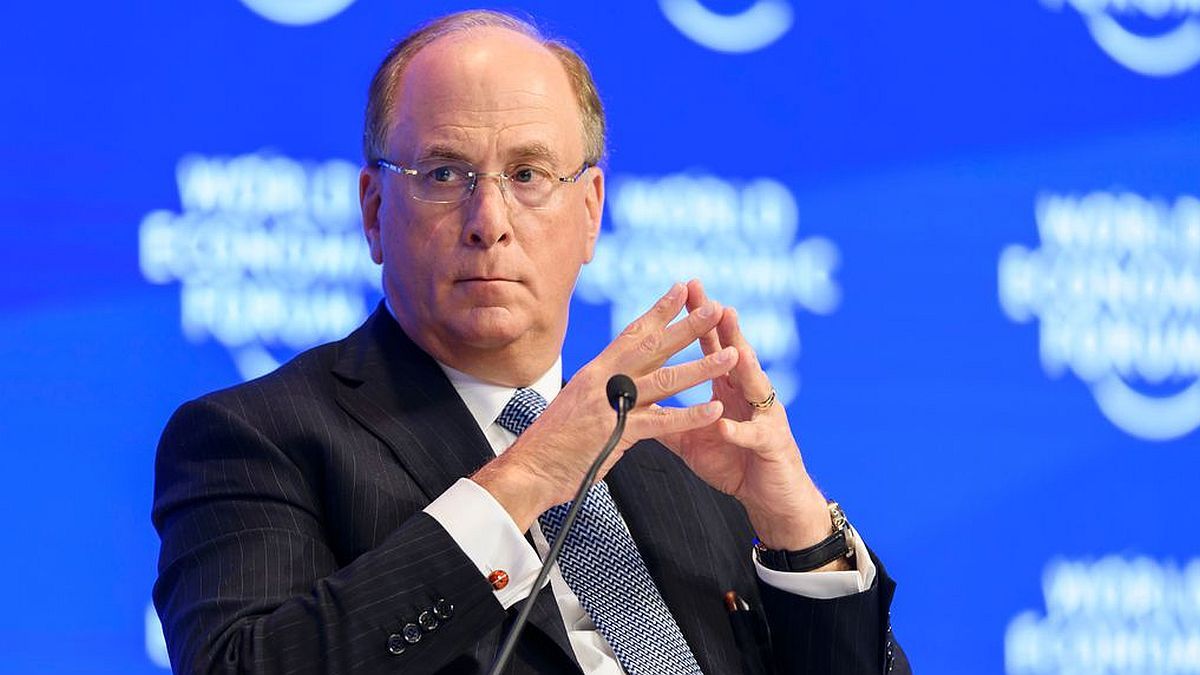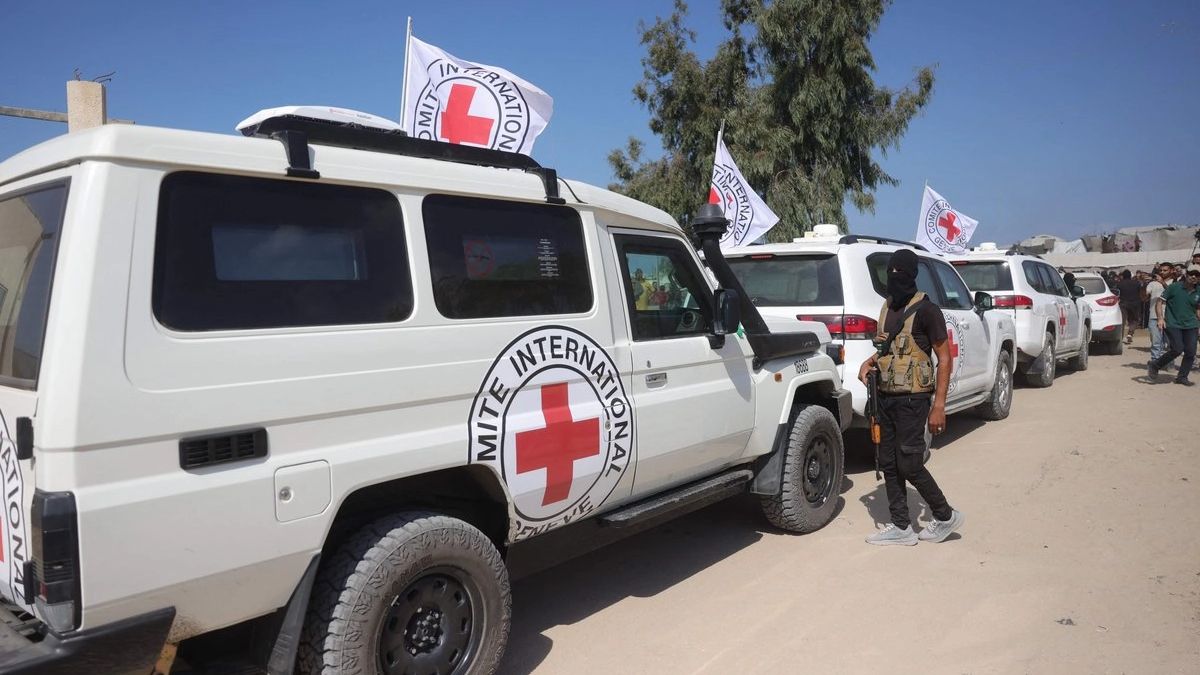Although the German club is one of the most important in its country, its greatness pales before that of the powerful Spanish team.
Although you already know what it is to be champion of the Champions (they won it in 1997) the negriamarillo team is one of those that has won the prestigious tournament the fewest times, unlike the Real Madrid, who is positioned as the greatest winner in the entire history of the contest, with 14 “Orejonas” in his possession.
Furthermore, the value of its millionaire squad pales in comparison to the price reached by the merengue squad.
According to the Transfermarkt site, the Madrid player is worth a little more than double that of the Aurinegros.
Real Madrid players have a total value of US$1,128 million. The most expensive footballer is Jude Belligham, whose transfer is estimated at US$195 million and is closely followed by Vinícius Júnior (US$163 million).
According to the same website, in the Borussia Dortmund none of the players exceeds $43.4 million in market value. With that courage appears one of its greatest figures, Julian Brandt, along with Donyell Malen, who is injured, and his goalkeeper Gregor Kobel. One step further back, at $32.5 million, are Nico Schlotterbeck and Ian Maatsen, closely followed by Jamie Bynoe-Gittens and Karim Adeyemi, at $30.3 million. In total, the professional team is valued at US$503.2 million. That is, there is a difference of US$625.4 million between the two clubs.
Two teams, two styles: a trainer and a buyer
Borussia Dormund and real Madrid They live in two absolutely different and opposite ecosystems.
The Germans had to change their way of managing to survive; The Spaniards appeal to their wallets to continue dominating European and world football.
The change in the management of economic-financial governance occurred in Borussia starting in 2005.
The team had just been champion of the Bundesliga and runner-up in the Uefa Cup in 2002. However, the club’s finances revealed that the economic model was not sustainable.
borussia dortmund team.jpg
The Borussia Dortmund squad has a much lower value than its rival on Saturday in the Champions League final: just $43.4 million.
Reuters
Precisely in 2005 Borussia Dortmund It was about to declare bankruptcy, so it had to reformulate a settlement plan agreed upon with shareholders and partners in order to continue surviving.
Therefore, at the dawn of the 21st century, the German club began to develop a policy of promoting youth players and looking at pre-adolescent footballers from other countries to buy them, train them and have them “explode” when they go up to first class and then be able to sell them to powerful institutions. .
Thus, Borussia It became a test bed for football on the European continent. It’s already like a seal: If a footballer performs at Dortmund, he is ready for elite football.
This was the formula with which he began to make money. An example is that of Jud Bellingham an English midfielder who debuted at just 16 years old in the Birmingham and, shortly after, he made headlines in the Championship (the English Second Division).
The player, who was barely known by the local press, caught the attention of the Dortmund, who decided to bet on him and bought him for almost US$12 million, which ended up being US$32.5 million for objectives.
After standing out in Dortmund’s first team, Belligham is sold to Real Madrid three years later for $111.3 million
For Dortmund it was an exorbitant financial gain that could be overshadowed by what they do. Bellingham against his former team in the final.
The natural cycle of the player who passes through Dortmund is to explode at the club, go to a bigger club and probably not return. Thus, in recent years, the Germans have seen players of the caliber of Ousmane Dembélé (PSG), Christian Pulisic (Milan), Pierre-Emerick Aubameyang (Marseille), Erling Haaland (Manchester City), Henrikh Mkhitaryan (Inter), Mario Götze (Eintracht Frankfurt) and Achraf Hakimi (PSG), among the most prominent.
Furthermore, the institution has the particularity of being the only one in Germany that is listed on the stock exchange (since the 2000s).
With the pass to the final of this year’s Champions League, the stock rose 12.74% and accumulates 13.97% annually. But globally, since its release on the German market, the drop is almost 57%.
The “Royal” wallet
real Madrid It is the completely opposite case: it is not listed on the stock market nor does it have an economic composition of mixed capital like the Germans, which are also tied to the 50+1 rule to preserve the property of the partners.
However, real Madrid It is a consolidated brand worldwide within football. It has an entire commercial machinery oiled that feeds the extraordinary plates that its president creates. Florentino Pérez. It starts from the children who wear the Merengue shirt to the dream of getting to know the Bernabéu as adults, television, the members…
Since that remembered “Galácticos” team, Real Madrid tends to be in deficit in the transfer market. However, it supports the business model of its astronomical purchases by compensating it with marketing, the sale of t-shirts and all its brand products.
However, in recent years, beyond the arrival of Bellingham, It has a more stable squad that occasionally reinforces it in the position it needs.
In this last market, Merengue ended up US$132 million down on the balance sheet.
REALMADRID TEAM.webp

Real Madrid players have a total value of US$1,128 million, a little more than double that of Borussia Dortmund.
Reuters
From time to time, the Madrid also applies the training model of Dortmund. Cases like those of the Turkish Arda Güler (bought from Fenerbahçe at 19 years old), Federico Valverde (from Peñarol with 16) and Eduardo Camavinga (from Rennes with 18) point out the pragmatism of the Madrid. Footballers identified as a diamond in the rough that Merengue decided to buy to polish. Today, they are key pieces of the coach’s starting eleven Carlo Ancelotti.
However real Madrid It is one of the largest producers of footballers in Europe. This is reported by the CIES observatory, which made a breakdown of Factory and concluded that Madrid is the team that has trained the most players who play in the five major leagues, with 44. The economic return? Barely $430 million since 2009. As if he had sold each footballer for $8.78 million.
With this institutional policy, he became a candidate in all editions of the Champions League.
The truth is that on Saturday a new edition of the top European tournament will be defined by two clubs with diametrically opposed models.
It remains to be seen whether the powerful man who opens his wallet or the more modest trainer and seller of footballers will win.
Source: Ambito
I am Pierce Boyd, a driven and ambitious professional working in the news industry. I have been writing for 24 Hours Worlds for over five years, specializing in sports section coverage. During my tenure at the publication, I have built an impressive portfolio of articles that has earned me a reputation as an experienced journalist and content creator.




